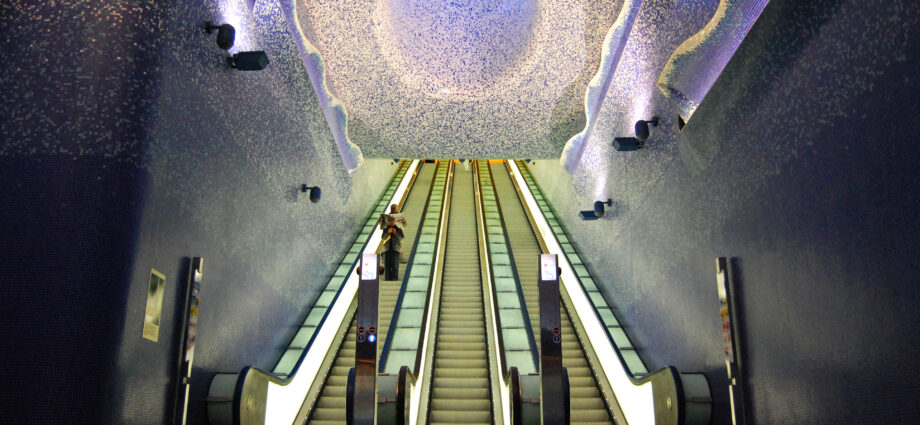In our interest and committment to cover aspects of urbanism from various angles and with a specific interest in sustainable mobility, we connected with Gilda Donadio, Head of Communication and Media Relations at L’Azienda Napoletana Mobilità (www.anm.it) – the agency for public transport in Naples Italy.
Our focus for this dialogue was on art, the impact of pandemic restrictions on movement as well its influence on active mobility.
“The Art stations originated from a project formulated by the city government with a view to make the urban area’s public transport centers more attractive and to give everyone a chance to get an up-close look at prime examples of contemporary art.“
L’Azienda Napoletana Mobilità
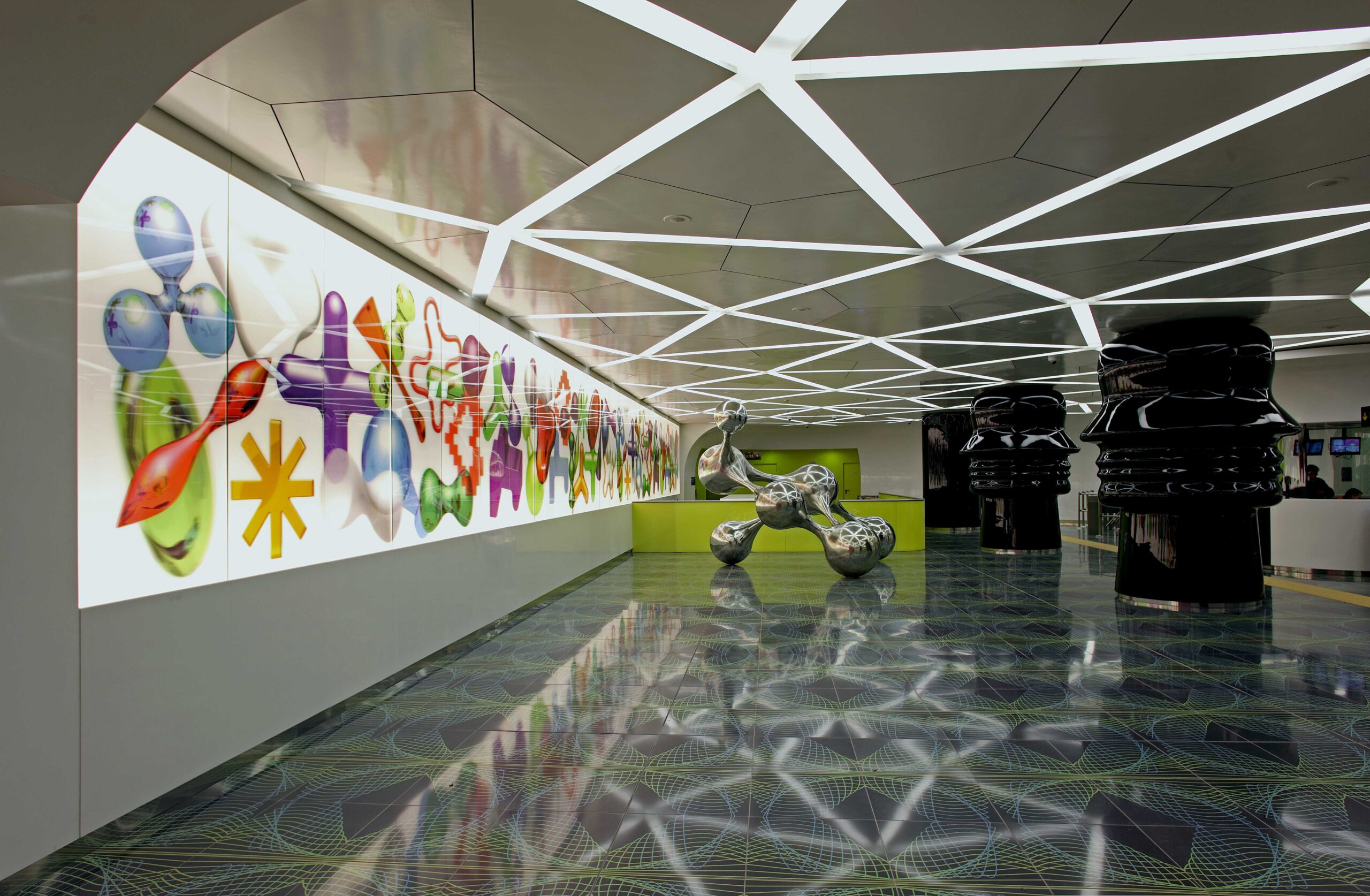
“With the pandemic emergency, interest in alternative mobility has increased (for example, the use of electric bicycles and scooters) to integrate with traditional mobility systems. Many have taken advantage of state bonuses to buy even more than one in the family. Even if in circumstances that we never would have hoped for, the population increasingly appreciates the possibility of benefiting from smog-free city spaces, as well as less crowded public transport.”
L’AZIENDA NAPOLETANA MOBILITÀ
Pedestrian Space: What is the relationship of contemporary art and public transport in Naples?
L’Azienda Napoletana Mobilità: The art stations of Naples have transformed the local metro into commuter-friendly art spaces that are some of the most impressive in Europe. The Art stations originated from a project formulated by the city government with a view to make the urban area’s public transport centers more attractive and to give everyone a chance to get an up-close look at prime examples of contemporary art. Under the direction of Achille Bonito Oliva, former director of the Venice Biennale, several stations have been converted into art galleries displaying over 200 works by more than 90 artists and architects such as Alessandro Mendini, Gae Aulenti, Karim Rashid, Oscar Tousquet Blanca, Alvaro Siza and Dominique Perrault. Not only do these stations function as underground galleries, but they are architectural feats that stand alone as works of art.
Pedestrian Space: We understand that there was a several years collaboration between the Italian government and 100 artists to create the extensive range of underground art. Can you share more about this?
L’Azienda Napoletana Mobilità: The project of Stations of Art has been promoted by the town administration to make the transportation environment more attractive, to put big areas of the city to best use and to offer everybody the possibility to encounter contemporary art. The idea of giving a very high artistic and cultural level to the stations has been accomplished in two different ways.
On one side, the internal and external spaces of the stations, hold 200 works created by 90 of the most prestigious contemporary artists, make it one of the most interesting examples of a museum located in the entire urban area. In this way the museum is not a closed space with its usual concentration of works; it is an exhibition route in open space for a dynamic enjoyment of the art.
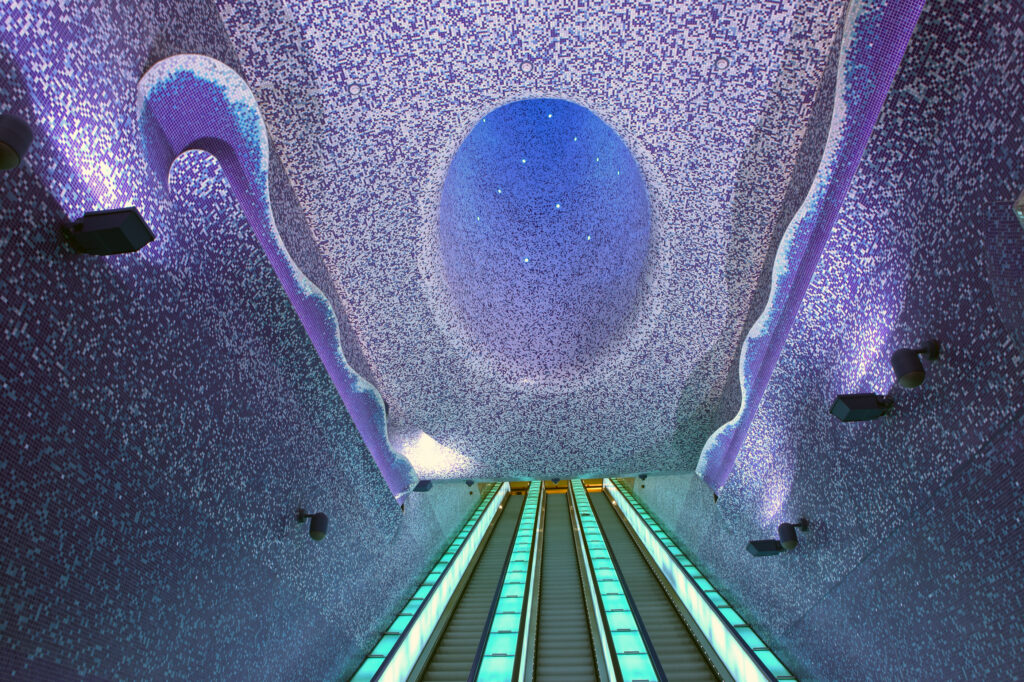
On the other side, the creation of these same stations, by architects known all over the world as Gae Aulenti, Alessandro Mendini, Vittorio Magnago Lampugnani and Karim Rashid, Oscar Tousquets Blanca, Àlvaro Siza and Dominique Perrault, improves big areas of the city. The insertion of the works of art in the subway is not a simple answer to usual demands of decoration of a public structure, which is also important as it can represent a meaningful index of quality of life; neither does the presence of art works underline a project of a “compulsory museum”, able to force the hasty traveler to an unexpected meeting with the art. Important artists as Jannis Kounellis, Joseph Kosuth, Mimmo Paladino, Sol Lewitt, Enzo Cucchi, Mario Merz, Renato Barisani, Mimmo Rotella, William Kentridge, Robert Wilson, Michelangelo Pistoletto, have been asked to give a face and a voice to the need of identity and of historicity that the time in which we live, called by Augè “surmodernité” (“supermodernity”), forces to the borders of the social life.
“With the opening of the new stations, the entry into service of the new metro train fleet and the imminent completion of the metro network, the Naples transport system will achieve full integration between surface and rail means of transport, relaunch transport public and promote sustainable mobility in the city.”
L’AZIENDA NAPOLETANA MOBILITÀ
Pedestrian Space: How does the public art connect with the city identity in Naples?
L’Azienda Napoletana Mobilità: Our art historian and underground artistic heritage manager Maria Corbi explained: “…what is the role played by works of art? If certain number of works would have been located as simply objects and icons, of various natures and of various origins, underling a condition of isolation in the new context of the stations, they would have looked like pathetic fragments of life or of historical memories exhibited under the glass. On the contrary a braver game has been played with paintings, sculptures, mosaics, photos and the installations directly commissioned to the artists who have been able to redraw the environment. “
Pedestrian Space: Other than metro (the underground) what are the public transport options in Naples?
L’Azienda Napoletana Mobilità: Bus lines, trams and trolley buses, two underground lines (Line 1 and Line 6), four funicular systems (Chiaia, Centrale, Montesanto and Mergellina), a widespread system of intermodal escalators, city elevators and numerous connection nodes for access to the interchange parking lots, make up the integrated transport network managed by ANM SpA.
With the opening of the new stations, the entry into service of the new metro train fleet and the imminent completion of the metro network, the Naples transport system will achieve full integration between surface and rail means of transport, relaunch transport public and promote sustainable mobility in the city.
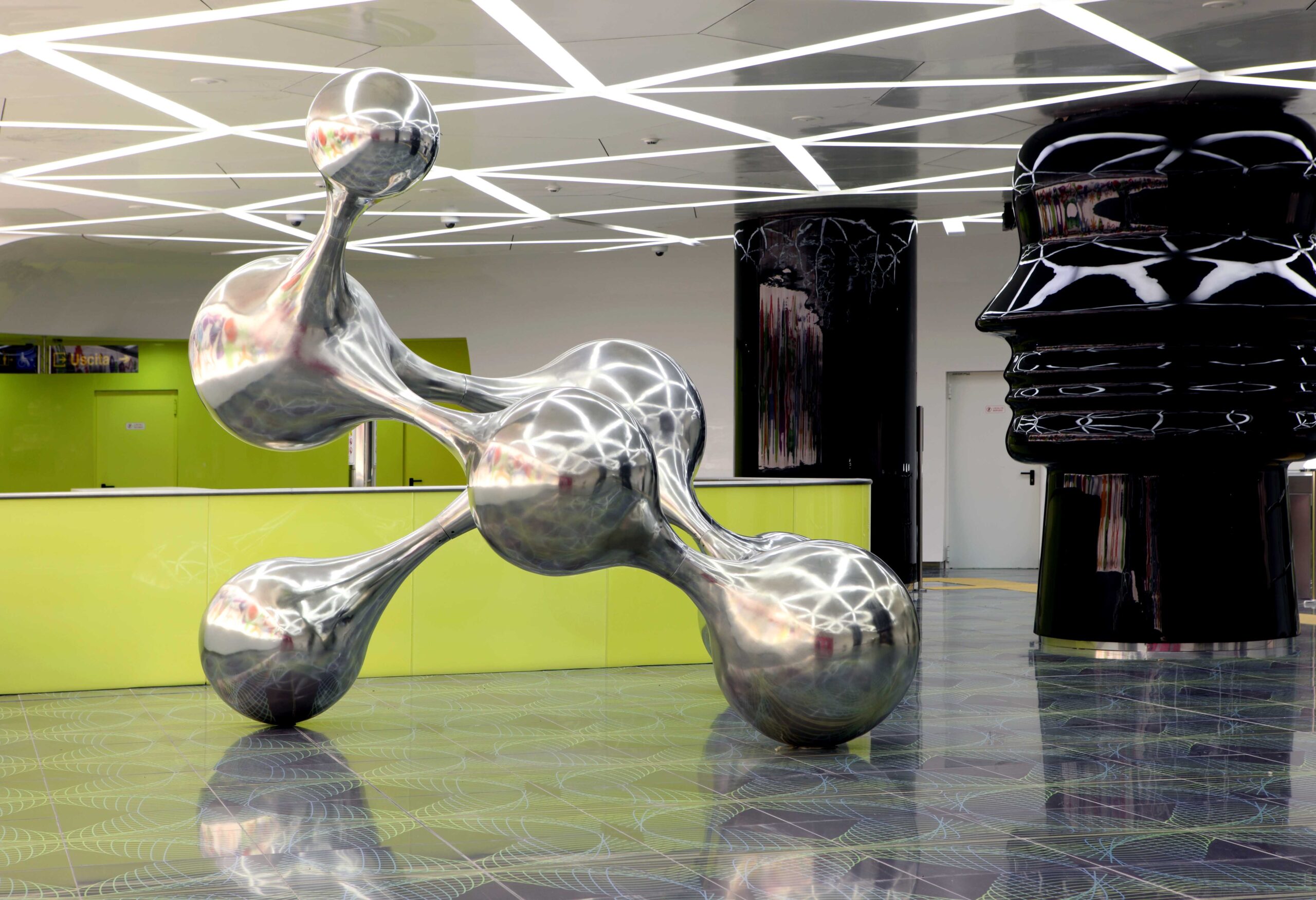
Pedestrian Space: How has public transport in Naples been affected by the pandemic?
L’Azienda Napoletana Mobilità: Unfortunately, with the worsening of the health emergency, as in the whole world, even in Italy, the authorities for safety reasons have imposed restrictions on travel. This is also the case on board means of transport where the maximum capacity allowed varies between percentages of 80 to 50% of passengers compared to normal conditions. As expected, this circumstance caused a collapse in demand and consequently also in revenues from the sale of travel tickets which for all transport companies caused unprecedented economic damage. We take the necessary measures from time to time and hope to overcome this difficult time soon.
Pedestrian Space: Has your office observed an increase in interest for walking and space for pedestrians in recent years and particularly during the pandemic?
L’Azienda Napoletana Mobilità: With the pandemic emergency, interest in alternative mobility has increased (for example, the use of electric bicycles and scooters) to integrate with traditional mobility systems. Many have taken advantage of state bonuses to buy even more than one in the family. Even if in circumstances that we never would have hoped for, the population increasingly appreciates the possibility of benefiting from smog-free city spaces, as well as less crowded public transport.
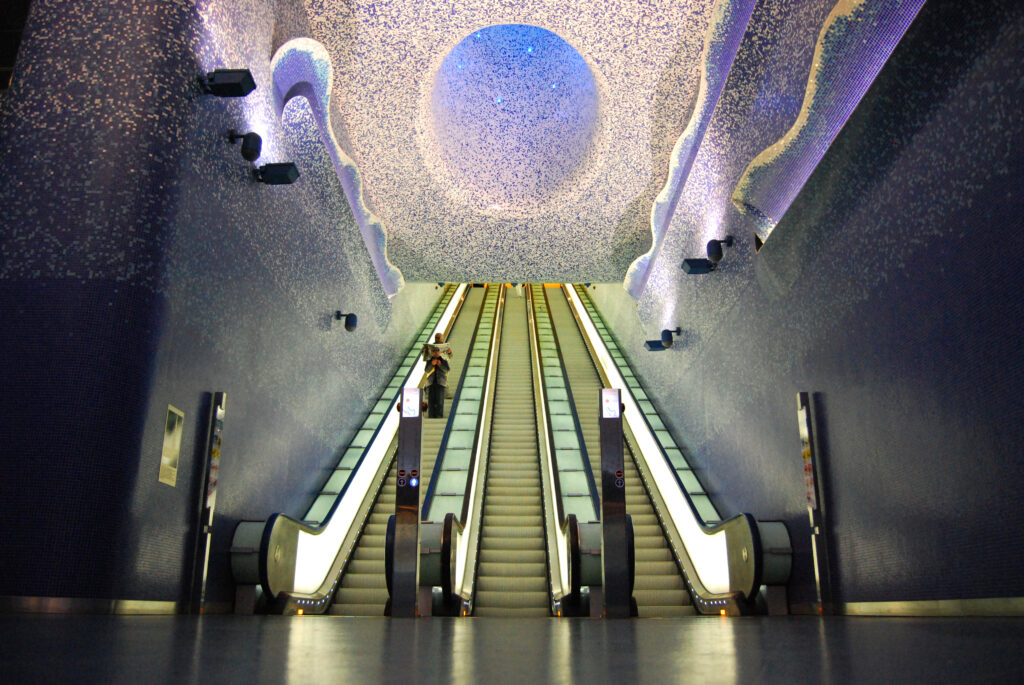
Built by Catalan architect Oscar Tousquets Blanca, Toledo station has received great international recognition. This beautiful station is part of the city’s network of so-called Metro Art Stations. Opened in 2012, Toledo station defies its depth at 50 meters, one of the deepest in Naples, with a design based around themes of light and water. The spectacular skylight work “Crater de luz”, illuminated by the LED lighting system designed by Bob Wilson, has become the symbolic work of the metro art stations. It is a large cone that crosses in depths of the station, connecting the street level with the spectacular hall built 40 meters underground. The spectacular infrastructure combined with the functionality of travel environments in 2014 earned her the title of “most beautiful station in Europe” according to British newspaper Daily Telegraph, ranking among the finest stations in the world according to American broadcaster CNN.
It was also awarded the prestigious international “Emirates Glass LEAF Awards” in 2013 as “Public Works of the Year” in the “Transport and Infrastructure” category. Finally in 2015, it was awarded the ITA International Tunneling Awards, the Oscars of the Department of Public Works in the most innovative underground, held in Hagerbach, Switzerland.
Description of Toledo Station provided by ANM

